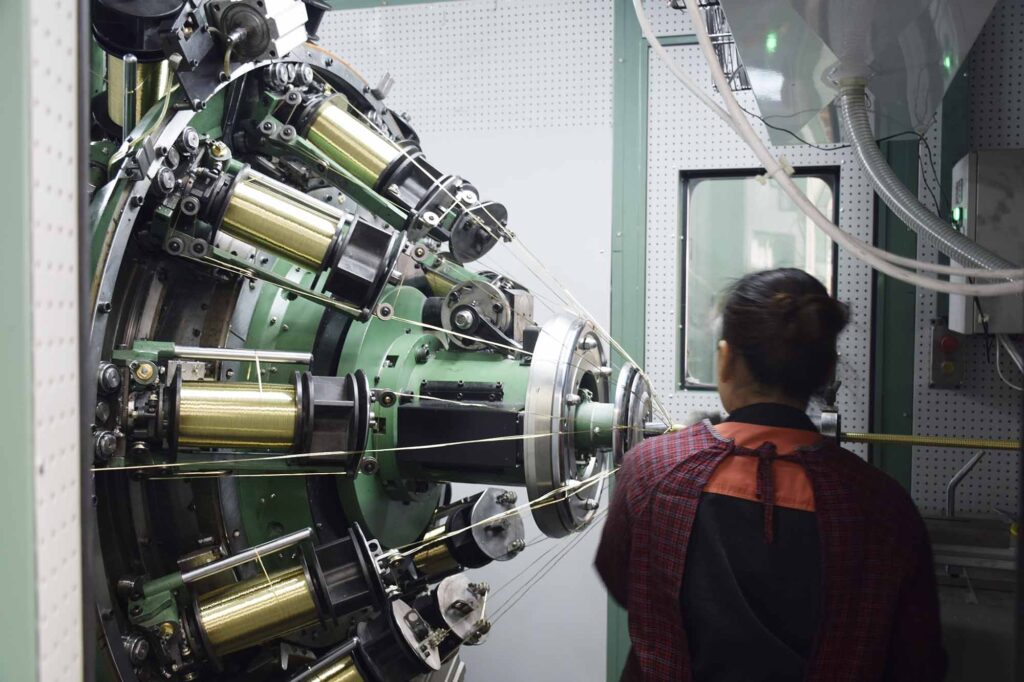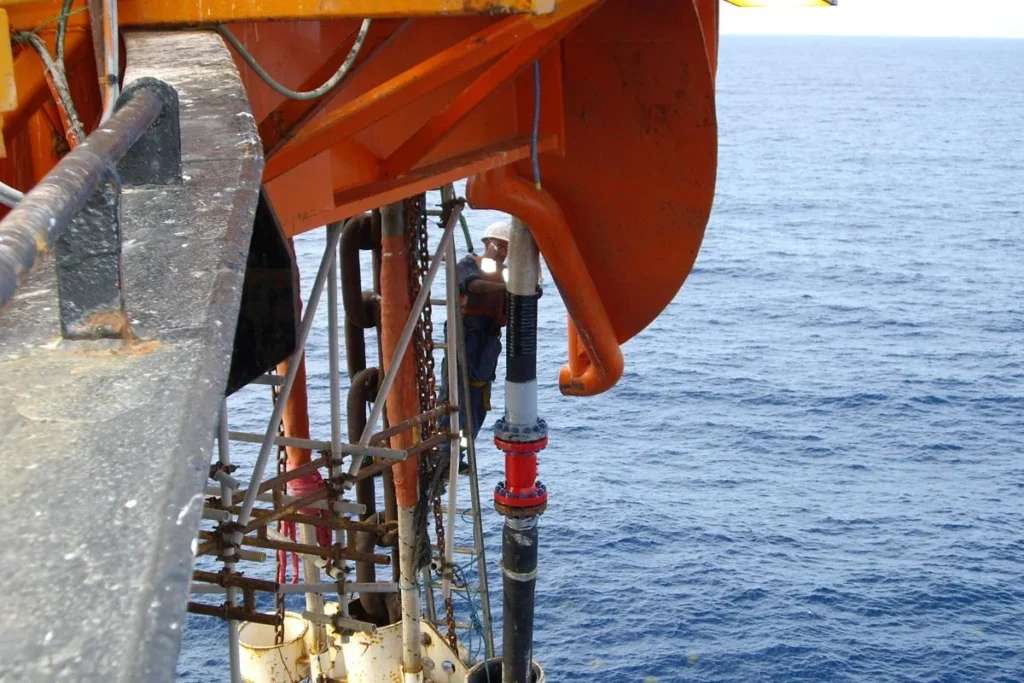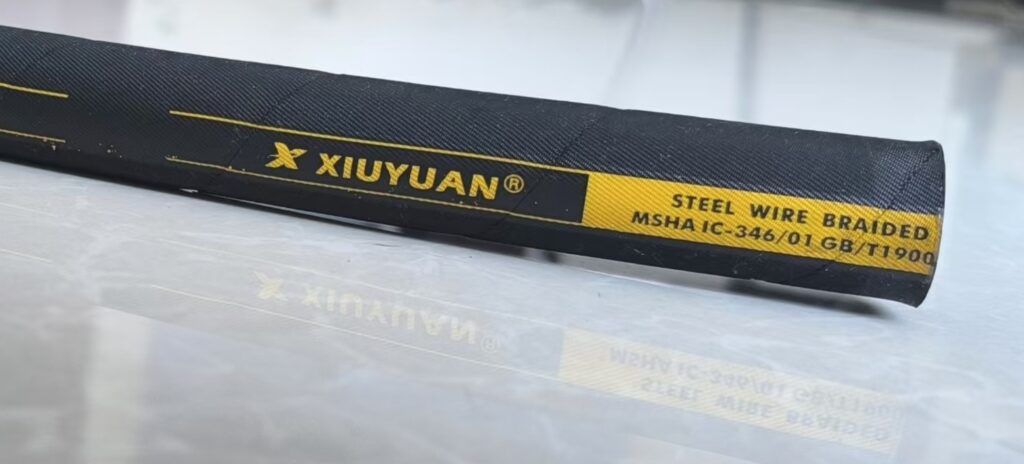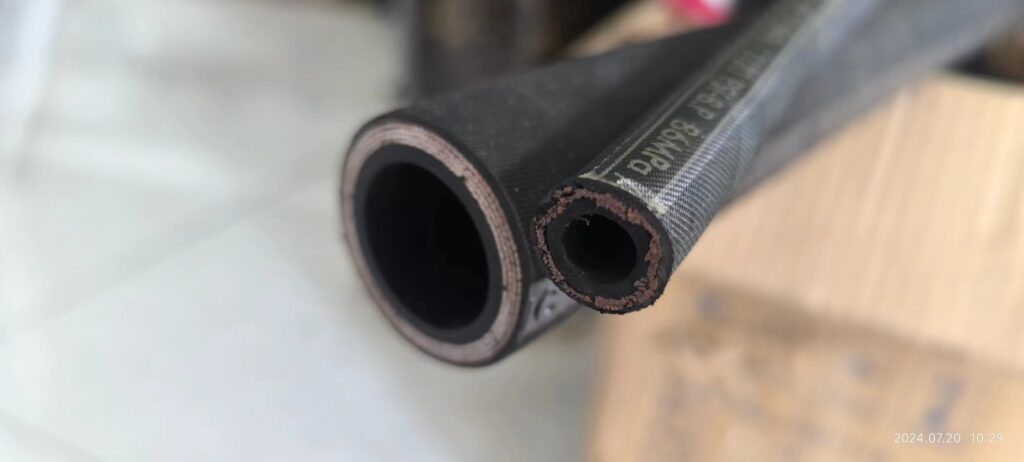Introduction
Hydraulic hoses play a pivotal role across diverse industries, serving as lifelines for transmitting essential fluids and power within intricate hydraulic systems. These systems power heavy machinery, manufacturing equipment, construction machinery, and more. Their efficiency directly impacts overall operational success.
These hoses are the conduits through which hydraulic fluid flows, facilitating the transmission of force and motion, enabling precise control of machinery. However, wear and tear, coupled with environmental factors, can lead to common issues like leaks, abrasions, and degradation. This is where comprehensive repair guides step in, playing a vital role in maintaining system integrity and longevity.
This article delves into the critical significance of hydraulic hoses in various industries, emphasizing their role in fluid and power transmission. It highlights the importance of having well-structured repair guides to address common issues promptly, ensuring minimal downtime and prolonging equipment lifespan. The guide encompasses maintenance practices, troubleshooting techniques, and safety protocols, empowering industries to optimize performance and uphold operational continuity.
Understanding Hydraulic Hoses: Components and Functions
Hydraulic hoses consist of three essential components: the inner tube, reinforcement layers, and outer cover. The inner tube, typically made of synthetic rubber or thermoplastic material, facilitates the smooth flow of hydraulic fluid while resisting chemical and temperature extremes. Reinforcement layers, usually composed of high-strength materials like braided steel wire or textile fibers, provide structural integrity, preventing hose expansion under pressure and ensuring flexibility. The outer cover shields the hose from environmental hazards such as abrasion, UV radiation, and moisture. These components collaboratively uphold hose strength, flexibility, and resistance to external factors, crucial for maintaining efficient fluid transmission and extending the hose’s operational life.
Common Causes of Hydraulic Hose Damage
Hydraulic hose damage can result from several factors, including abrasion caused by friction against surfaces, heat leading to material degradation, pressure spikes stressing the hose beyond its limits, and improper installation causing kinks or leaks. Recognizing these root causes is essential to prevent future damage and improve equipment efficiency. Implementing protective measures like abrasion-resistant covers, heat shields, pressure-relief valves, and correct installation techniques can mitigate risks. By understanding these factors and taking proactive steps, industries can enhance hose longevity, minimize downtime, and optimize machinery performance, ultimately bolstering overall operational efficiency and cost-effectiveness.
Preparing for Hydraulic Hose Repair
Prioritizing safety precautions before initiating any repair work on hydraulic systems is paramount to prevent accidents and injuries. Shutting down the hydraulic system properly, relieving pressure, and ensuring a safe working environment are crucial steps.
Shutting down involves turning off all power sources and controls to prevent unintentional activation. Next, pressure should be relieved by operating the system to release trapped hydraulic energy. This prevents sudden hose bursts or component movement during repair. Lockout/tagout procedures should be followed, and personnel should wear appropriate protective gear. Clear communication, proper signage, and proper workspace organization further contribute to a safe environment. By adhering to these precautions, the risk of accidents is minimized, promoting the well-being of workers and equipment integrity.
Tools and Equipment for Hydraulic Hose Repair
Hydraulic hose repair necessitates a range of specialized tools to ensure a successful and safe process. Here’s a list of essential tools and their purposes:
Wrenches: Open-end and adjustable wrenches are used to secure and tighten fittings, ensuring leak-free connections.
Cutters: Hose cutters provide clean and precise cuts, preparing hoses for repair or replacement without damaging the inner tube.
Clamps: Hose clamps secure hoses onto fittings, preventing leaks and maintaining a secure connection under pressure.
Crimping Machine: A crimping machine is used to attach new fittings to hoses securely. Proper crimping ensures reliable fluid transmission.
Fitting Assortment: Replacement fittings and adapters are necessary for connecting hoses to components and maintaining compatibility.
Thread Sealant/Teflon Tape: These materials help seal threaded connections, preventing fluid leakage.
Hose Cleaning Kit: A cleaning kit removes debris and contaminants from hoses before repairs, ensuring optimal flow and preventing system contamination.
Pressure Gauge: A pressure gauge helps verify that the repaired hose and system are functioning within safe operating limits.
Safety Gear: Personal protective equipment (PPE), such as gloves, safety glasses, and protective clothing, safeguards repair technicians from potential hazards.
These tools collectively facilitate a comprehensive and efficient repair process, maintaining the integrity of the hydraulic system, preventing leaks, and ensuring the safety of repair personnel.
Step-by-Step Hydraulic Hose Repair Guide
Assess the Extent of Damage:
Inspecting a damaged hydraulic hose is crucial to determine the appropriate repair approach. Check for visible cracks, abrasions, or bulges on the hose’s outer cover. If damage is suspected, it’s advisable to depressurize the system and clean the hose thoroughly to get a clear view of any potential issues.
Cut and Prepare the Hose:
To safely cut the damaged section, use hose cutters to achieve a clean, perpendicular cut. Ensure that the cut is straight and even. After cutting, remove any debris from the inner tube and the outer cover to prevent contamination. Trim the damaged ends if necessary to ensure a smooth surface for the fittings.
Select the Right Fittings:
Choosing compatible replacement fittings is crucial for a secure and leak-free repair. Consider the hose’s inner diameter, type, and working pressure when selecting fittings. Match the fittings’ threading, material, and design to the existing connections and the application’s requirements.
Assemble and Crimp:
Slide the selected fittings onto the prepared hose ends, ensuring a snug fit. Position the hose and fittings in the crimping machine according to manufacturer guidelines. Operate the crimping machine to compress the fittings onto the hose ends, creating a strong, reliable connection. Follow recommended crimping specifications for proper assembly.
Test and Inspect:
After crimping, perform a thorough inspection of the repaired hose. Test the assembly for leaks by conducting a pressure test, gradually increasing pressure to the system’s operational level. Additionally, check the hose for proper alignment and positioning within the system. Verify that the repaired hose functions as intended before putting it back into service.
Effective hydraulic hose repair involves careful assessment, proper cutting and preparation, thoughtful selection of replacement fittings, meticulous assembly, and rigorous testing. By following these steps, you can ensure a reliable repair that restores the hose’s functionality and maintains system safety and efficiency.
Advanced Techniques for Hydraulic Hose Repair
Advanced repair techniques like field-attachable fittings and reusable fittings provide valuable flexibility in repair scenarios. Field-attachable fittings allow on-site assembly without specialized equipment, enabling quick fixes. Reusable fittings permit repeated hose connections, reducing downtime and waste.
To use these techniques effectively, ensure the hose is properly cut, cleaned, and prepared. For field-attachable fittings, insert the fitting into the hose, secure it with a collar, and tighten. Reusable fittings require inserting the fitting, ensuring a tight connection, and securing it with clamps or screws.
In emergencies, these techniques save time and resources, restoring functionality rapidly. They minimize equipment downtime and decrease the need for replacement hoses. However, their success relies on accurate installation and adherence to manufacturer guidelines, ensuring reliable repairs without compromising safety or system efficiency.
Preventive Maintenance for Hydraulic Hoses
Significance of Preventive Maintenance for Hydraulic Hoses:
Preventive maintenance is essential for prolonging hydraulic hose lifespan, enhancing equipment reliability, and reducing operational disruptions. Regular upkeep prevents unexpected failures, ensures safety, and optimizes system performance.
Tips for Effective Preventive Maintenance:
Regular Inspections: Conduct visual inspections routinely to identify early signs of wear, leaks, or damage.
Proper Installation: Follow manufacturer guidelines during installation to prevent leaks and premature failure.
Optimal Routing: Secure hoses to prevent rubbing and minimize bending stress.
Temperature and Pressure Monitoring: Maintain fluid conditions within safe operating ranges.
Replace Aging Hoses: Schedule proactive replacements based on usage and condition.
By adhering to these practices, you can maximize hydraulic hose longevity, minimize downtime, and uphold operational efficiency.
Safety Considerations During Hydraulic Hose Repair
Prioritize safety during repairs by wearing proper PPE, including gloves, safety glasses, and protective clothing. Maintain a clean and organized workspace to prevent tripping hazards. Mitigate potential hazards like high-pressure fluid release by depressurizing the system and using lockout/tagout procedures. Prevent cuts and abrasions by using proper tools and techniques. Adhere to manufacturer guidelines and safety protocols to ensure the technicians’ well-being and minimize risks during the repair process.
Importance of Professional Assistance
Seeking Professional Help for Complex Hydraulic Repairs:
For intricate repairs or critical hydraulic systems, it’s prudent to enlist professional assistance. Professionals bring specialized knowledge, experience, and equipment to ensure effective and safe repairs.
Value of Expertise in Repaired Hydraulic Hoses:
Professionals possess in-depth understanding of hydraulic systems, enabling accurate diagnosis and precise repairs. Their expertise minimizes the risk of errors that could lead to leaks, premature wear, or system failures. Quality repairs extend hose longevity, enhance performance, and maintain equipment reliability. Investing in professional help assures optimal repairs and safeguards against potential hazards, ultimately contributing to the overall efficiency and productivity of hydraulic systems.
Conclusion
This guide underscores the significance of safe and effective hydraulic hose repair. It highlights the importance of step-by-step adherence to procedures for successful repairs, extending hose lifespan and optimizing system performance. Proper assessment of damage, correct cutting, choosing suitable fittings, and thorough testing are crucial.
Readers are encouraged to prioritize preventive maintenance, encompassing regular inspections, proper installation, and correct routing to minimize wear and tear. Following industry best practices ensures not only safety but also sustained equipment reliability. By implementing these practices, you can minimize downtime, reduce costs, and maintain optimal hydraulic system functionality.





